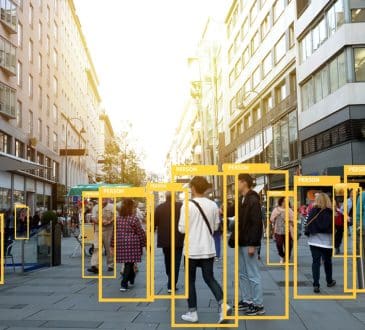Why Now Is the Time to Invest in E-Commerce Menu Navigation

In a digital world where consumers are looking for seamless experiences, menu navigation will only become more and more important. Ensuring you have a smarter, more data-driven UX will be the key to your future e-commerce success. So how can operators of e-commerce sites build better navigation menus?
Based on the numbers, the burger menu — so-called because the icon looks like three horizontal lines — is a critical element in any e-commerce site.
Navigation is especially important on mobile to help users quickly find their way through a large catalog of items when screen sizes (and attention spans) are small. Through research and analysis of several large e-commerce brands, we’ve learned more about the importance of supercharging your menu navigation.
Menu Navigation for E-Commerce Is Usually Static
Brands are aware of the value of menus in helping users discover more kinds of products and explore the sections of the catalog that are most interesting to them. However, due to a lack of technical resources, e-commerce sites tend to be limited to experimenting with superficial and hardcoded changes to their menus, such as:
- Completely cosmetic changes such as adjusting colors and fonts
- Using an analyst to find the top-performing product categories that month, then promoting those manually via HTML
- Trying to replicate a competitor’s menu design
A Static Menu Has a Negative Effect on a Brand’s Bottom Line
Our research shows that more than half of shopping sessions involve the burger menu, so it’s important to focus on making this component useful. Due to limited screen real estate and the potential for human error, they’re even more important on mobile, where more than half of users shop worldwide.
Static menus result in wasted clicks as users need to search for the parts of the catalog that are most relevant to them. Based on our evaluation of three major e-commerce sites, over 50% of users needed more than 40 clicks to achieve their goals. When friction like this exists, customers become roughly 2% to 5% less likely to make a purchase.
Brands Are Competing With AI-Driven Experiences From Big Tech
Improving the navigation experience is also important because it helps brands compete on the same level as large tech platforms. These platforms have invested heavily in data science, engineering, and product management to build AI-powered user experiences. By modeling users’ interests and intents in real time, sites like Amazon or Netflix can surface the relevant categories from their catalogs.
Menu navigation looks different for every user and is streamlined to reduce all possible sources of friction. As users spend more and more time on these platforms, their tolerance for friction decreases:
- Users can perceive delays as low as 33 milliseconds
- 74% of customers feel frustrated when website content is not personalized
- 47% of consumers check Amazon if the brand they’re shopping with doesn’t provide product suggestions that are relevant
How E-Commerce Sites Can Build Better Menus
All that said, how can operators of e-commerce sites build better navigation menus?
- Use data to your advantage.
There’s a misperception that the average e-commerce site doesn’t have the “big data” needed to do sophisticated AI-powered UX. But on the contrary, our research shows that shoppers generally exhibit over 50 clicks and hundreds of other interactions (such as scrolls) before making a purchase. This data is incredibly useful, and with sufficient data science and engineering resources, it can be used to train models that accurately predict a user’s intent and adapt the store’s UI accordingly. - Seek out emerging tools.
If you don’t have the resources to build AI-driven experiences in-house, you may want to invest in a third-party tool. However, traditional personalization tools like Algolia or Bloomreach tend to be built around product semantics and focus on on-site search rather than menu navigation.There’s a need for new solutions in this space that will help e-commerce sites build a better UX. A growing number of emerging tools that leverage real-time data about users’ intentions based on their activity exist in the marketplace. As new data and activity stream in, a site can instantly adapt its design components to deliver users the best possible experience. The result is fewer useless clicks, more productive sessions, and higher conversion rates and average order values.
In a digital world where consumers are looking for seamless experiences, menu navigation will only become more and more important. Ensuring you have a smarter, more data-driven UX will be the key to your future e-commerce success.
Written by Peter Szalontay.
Have you read?
# Best CEOs In the World Of 2022.
# TOP Citizenship by Investment Programs, 2022.
# Top Residence by Investment Programs, 2022.
# Global Passport Ranking, 2022.
# The World’s Richest People (Top 100 Billionaires, 2022).
# Jamie Dimon: The World’s Most Powerful Banker.
Bring the best of the CEOWORLD magazine's global journalism to audiences in the United States and around the world. - Add CEOWORLD magazine to your Google News feed.
Follow CEOWORLD magazine headlines on: Google News, LinkedIn, Twitter, and Facebook.
Copyright 2025 The CEOWORLD magazine. All rights reserved. This material (and any extract from it) must not be copied, redistributed or placed on any website, without CEOWORLD magazine' prior written consent. For media queries, please contact: info@ceoworld.biz











